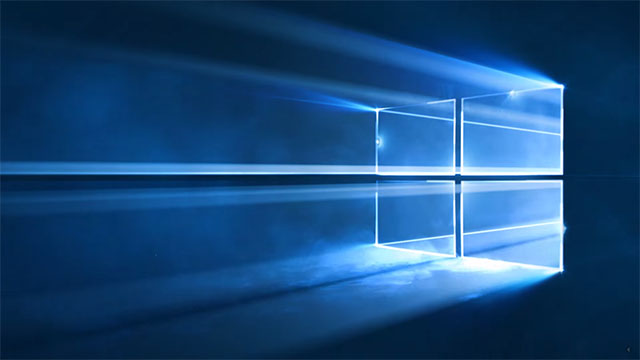Those who have signed up for the Insider program, and kept their Windows 10 builds up to date, may have noticed something missing on their desktop, once completing the upgrade to the latest build 10240. One insignificant detail has been removed from the bottom right corner of the screen, and that detail is the little watermark text displaying the version of the current build, as well as its preview status.

Yes, you guessed it: Microsoft is wasting no time taking the training wheels off of the last Windows we’ll ever need. Windows 10 Build 10240 is expected to be the last build released to Insiders until the official release to manufacturers, in less than two weeks.
Build 10240 was released yesterday to both slow and fast rings, and while there are still a few things that Microsoft needs to work on, these won’t impede the build to be released to manufacturers, so that they may test it on new upcoming devices.
Why no more ISOs?
Doing a clean install at this stage will be more difficult, until Windows 10 is officially released. The reason is that at this point Insiders are expected to have followed the upgrade path provided, to ensure thorough testing of each build, and receipt of up to date feedback. With each build, Microsoft fixes hundreds of bugs, and there is no sense getting notifications for issues that have already been fixed in later builds.
Image files, however, are available to those who wish to do a fresh install, and upgrade, just not from Microsoft.
Windows 10 conspiracy theory, finally put to rest.
According to ZDNet’s Ed Bott, who has reviewed the new terms for Windows 10 licensing, there are no loopholes, gotchas, or any hint that Microsoft will ever force users to pay any kind of subscription fees. The unfounded rumors have made their way to consumers since the phrase “Windows as a service” entered the common lingo, and instantly became one of the most infamous terms, and the favorite one of conspiracy theorists.
Some users believed that the free upgrade to Windows 10 will not be free after all, a notion that has been rejected time and time again by Microsoft, and by common sense.
The new document is by every definition, simpler and clearer than any previous license agreement for a Microsoft operating system, and its terms can be summarized in six paragraphs:
Activation and licensing status when upgrading from a non-genuine copy of Windows:
As it has been previously reiterated, those who upgrade to Windows 10 from an illegitimate copy of Windows, will be able to, however the resulting installation will not be genuine. What is likely to happen after that is up to the user’s imagination.
Transfer rights
The ability to install a genuine copy of Windows 10 onto another computer is retained, just as it was true with previous versions of Windows. OEM versions of Windows that come preinstalled with new Windows PCs will not be transferable, as they are bound to the PC they are being shipped with, and just as Microsoft has reiterated time and time again, Windows 10 will be supported for the lifetime of the device.
On the other hand, those who happen to have bought a license of Windows 7 or 8.1 that is not OEM, will get to upgrade for free, and retain all transfer rights on any PC they want.
Downgrade rights
Don’t like Windows 10? Would you rather go back to Windows 8.1? Yeah... neither do we, however, Microsoft will allow users to downgrade any PC with Windows 10, to two previous versions, either Windows 8.1 or Windows 7, as long as they are still supported by Microsoft.
Automatic updates
Automatic updates are mandatory for both consumers and small businesses. These types of updates have been part of nearly all Windows agreements since Windows Update has been in existence, and are necessary to keep the system secure and stable, for as long as the operating system is supported.
No Commercial use rights for office products
While some editions of Windows 10 will come with Microsoft Office pre-installed, and fully functional, Microsoft doesn’t legally allow these free versions of Office to be used for commercial purposes, unless a valid license is purchased, and this has always been true for all previous offers of this kind.
What’s next
Windows 10 will continue its own upgrade path beyond RTM, with constant improvements for consumers. Among some of the expected development, are the return of the People app, which has been put on hold for several builds. The universal app in question will act as Windows unified address book and networking hub, which is a great concept that binds both the Mail and Calendar apps.